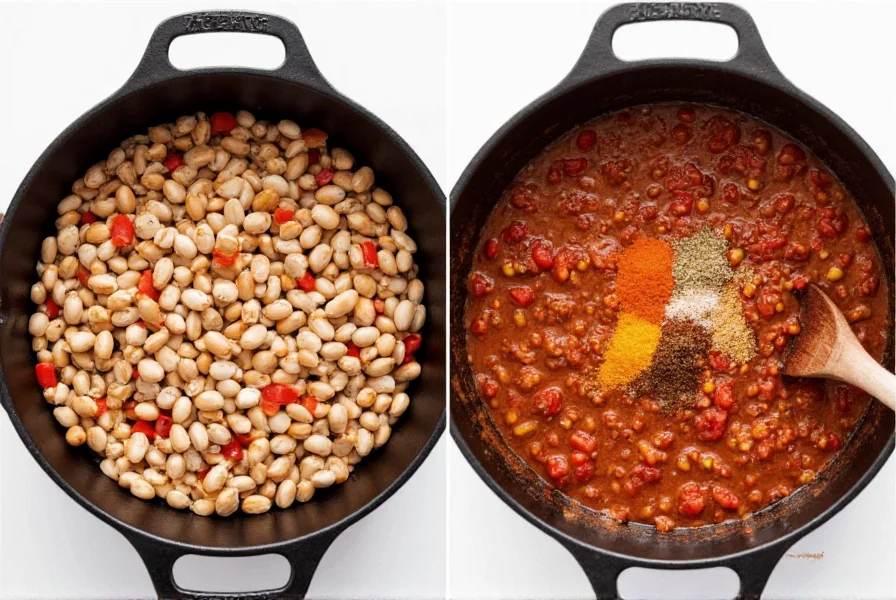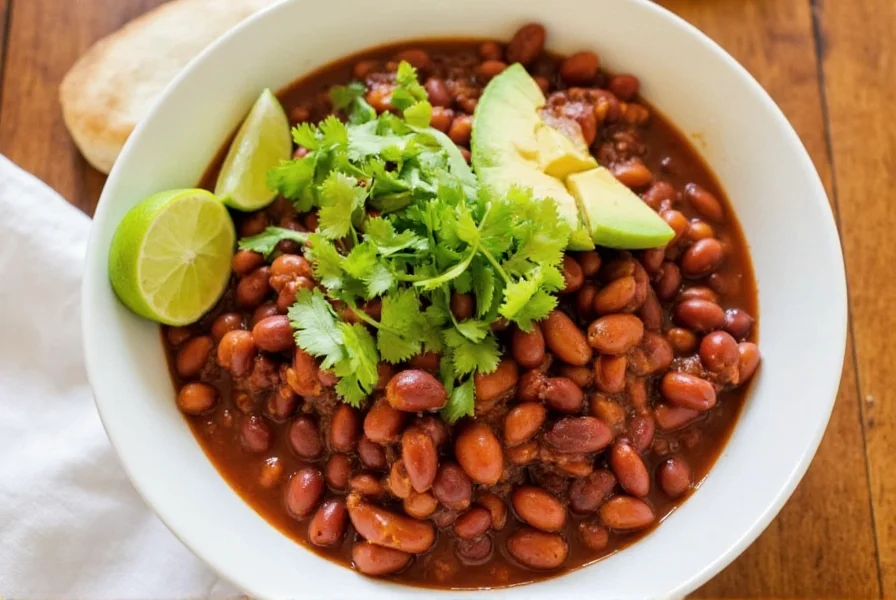Creating the perfect vegetarian bean chili requires understanding the balance of flavors, textures, and nutritional components that make this dish both satisfying and healthy. Unlike traditional chili recipes that rely on ground beef, a well-crafted vegetarian version uses beans as the protein foundation while maintaining the complex spice profile and hearty texture that chili lovers expect.
The Essential Components of Great Vegetarian Bean Chili
What separates an average vegetarian chili from an exceptional one comes down to ingredient selection and cooking technique. The best vegetarian bean chili recipes incorporate multiple bean varieties for textural interest and complete protein profiles. Dark red kidney beans provide firmness, black beans add earthiness, and pinto beans contribute creaminess when properly cooked.
| Essential Ingredients | Quantity | Preparation Notes |
|---|---|---|
| Dark red kidney beans | 1 can (15 oz) | Rinse thoroughly to remove excess sodium |
| Black beans | 1 can (15 oz) | Partially mash for thicker texture |
| Pinto beans | 1 can (15 oz) | Leave whole for texture variation |
| Fire-roasted tomatoes | 1 can (28 oz) | Provides depth of flavor |
| Fresh vegetables | 1.5 cups diced | Onion, bell peppers, carrots |
Building Flavor Complexity in Vegetarian Bean Chili
Without meat to provide umami depth, vegetarian bean chili requires strategic flavor building. The foundation starts with sautéing aromatic vegetables until caramelized, which creates natural sweetness. Adding spices at the right temperature unlocks their essential oils—toast dried spices like cumin and chili powder in the pot before adding liquids for maximum flavor extraction.
For authentic chili depth, include umami boosters like tomato paste cooked until it darkens slightly, a splash of soy sauce or tamari, and a small amount of cocoa powder. These ingredients work together to create the rich, meaty flavor profile typically associated with traditional chili without any animal products.

Perfecting Your Vegetarian Bean Chili Recipe
The cooking process significantly impacts your vegetarian bean chili's final texture and flavor. Begin by sautéing onions, garlic, and bell peppers until softened. Add spices and cook for 1-2 minutes until fragrant. Stir in tomato paste and cook until it darkens slightly, about 3 minutes.
Add fire-roasted tomatoes, vegetable broth, and all beans (reserving some black beans to add later). Bring to a simmer and cook uncovered for 25-30 minutes, stirring occasionally. In the last 10 minutes, add reserved black beans and any delicate vegetables like zucchini. The chili should thicken to a hearty but pourable consistency.
For the best flavor development, make your vegetarian bean chili recipe one day ahead. The flavors meld beautifully overnight, and reheating often improves the texture. When reheating, add a splash of broth if needed to reach your preferred consistency.
Customization Options for Different Dietary Preferences
One of the greatest strengths of vegetarian bean chili is its adaptability. For a spicy kick, add diced jalapeños with seeds included. Those preferring mild chili should remove all seeds and membranes from peppers before adding. To make your healthy bean chili recipe even more nutrient-dense, stir in chopped spinach or kale during the last 5 minutes of cooking.
For those following specific dietary patterns, this versatile dish accommodates various needs. Make it vegan by ensuring your broth is plant-based. Create a low-sodium version by using no-salt-added beans and homemade vegetable broth. For a protein boost in your meal prep chili, add cooked quinoa or lentils during the final simmer.

Serving and Storage Recommendations
Serve your homemade vegetarian bean chili hot with your choice of toppings that add contrasting textures and flavors. Classic options include diced avocado for creaminess, fresh cilantro for brightness, and a squeeze of lime for acidity. For those who enjoy dairy, a dollop of Greek yogurt provides cool contrast to the warm spices.
Vegetarian bean chili stores exceptionally well, making it ideal for weekly meal preparation. Cool completely before transferring to airtight containers. Properly stored in the refrigerator, it maintains quality for 4-5 days. For longer storage, freeze portions in freezer-safe containers for up to 3 months. Thaw overnight in the refrigerator before reheating gently on the stove with a splash of broth to refresh the texture.
Frequently Asked Questions
How can I make vegetarian bean chili thicker without adding flour?
To naturally thicken your vegetarian bean chili, reserve some beans before adding to the pot, mash them thoroughly, and stir back into the chili. Alternatively, simmer uncovered for an additional 10-15 minutes to reduce excess liquid while maintaining the hearty texture.
What's the best way to freeze vegetarian bean chili for meal prep?
Cool the chili completely, then portion into airtight containers leaving 1-inch headspace for expansion. Label with date and contents. For quick thawing, use freezer bags laid flat. Properly frozen vegetarian bean chili maintains quality for 3 months. Thaw overnight in the refrigerator before reheating with a splash of broth.
Can I make vegetarian bean chili in a slow cooker?
Yes, vegetarian bean chili adapts well to slow cooking. Sauté vegetables and spices first, then transfer to your slow cooker with remaining ingredients. Cook on low for 6-8 hours or high for 3-4 hours. The slow cooking process enhances flavor development, but avoid overcooking which can cause beans to become mushy.
How do I boost the protein content in vegetarian bean chili?
To increase protein in your healthy bean chili recipe, add cooked quinoa, lentils, or textured vegetable protein during the last 30 minutes of cooking. You can also stir in a tablespoon of hemp seeds per serving when serving. Using three different bean varieties naturally creates a complete protein profile through amino acid complementation.
What spices are essential for authentic vegetarian chili flavor?
The essential spice blend for vegetarian bean chili includes chili powder, cumin, smoked paprika, and oregano. For depth, add a small amount of cocoa powder and cinnamon. Toasting dried spices in oil before adding liquids releases their essential oils and creates a more complex flavor profile than simply stirring spices into liquid ingredients.











 浙公网安备
33010002000092号
浙公网安备
33010002000092号 浙B2-20120091-4
浙B2-20120091-4